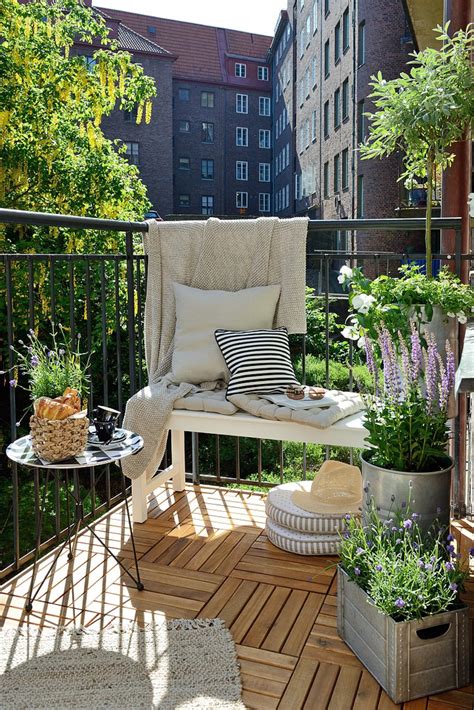Mastering Color Theory for Stunning Balcony Garden Design
Designing a balcony garden is an opportunity to bring nature into your outdoor living space, and color theory plays a crucial role in creating a harmonious and visually appealing garden. Whether you’re working with limited space or experimenting with container gardening, applying the principles of color theory can transform your balcony into a vibrant, peaceful, or dramatic sanctuary. This article delves into the fundamentals of color theory, providing key tips on how to enhance your balcony garden, regardless of your gardening expertise.
Introduction
Creating a beautiful balcony garden is not just about selecting plants based on their care needs. By incorporating color theory, you can craft a stunning garden that brings joy and balance. This guide will walk you through the essential concepts of color theory, offering practical advice on how to use it to elevate your urban gardening efforts. Understanding the relationship between colors, plant health, and the overall feel of your garden is key to gardening success.
Key Concepts of Color Theory in Balcony Gardening
Color theory in gardening revolves around the idea that certain colors evoke specific emotions and can either complement or contrast with each other. Key concepts include:
- Primary Colors: Red, blue, and yellow are the base colors from which all other colors are made. They create bold, eye-catching displays in any garden.
- Secondary Colors: Green, purple, and orange, formed by mixing primary colors, provide softer contrasts and harmonious combinations.
- Complementary Colors: Colors that are opposite each other on the color wheel (e.g., red and green) create striking contrasts, ideal for adding vibrancy.
- Analogous Colors: Colors adjacent to each other on the color wheel (e.g., yellow, orange, red) create a unified, calming effect in your garden design.
- Monochromatic Schemes: Utilizing varying shades of the same color adds depth and sophistication without overwhelming the senses.
Historical Context of Color Use in Gardening
Color has long been used to evoke emotion in gardening techniques. Ancient civilizations like Egypt and Rome integrated color theory into their horticultural practices to reflect power, spirituality, and harmony with nature. The 18th-century English landscape gardens focused on naturalism but still paid close attention to the subtle use of color to invoke certain moods. Today, balcony gardening brings this tradition into urban gardening spaces, using color to define personal outdoor living areas.
Current State Analysis: Trends in Balcony Gardening and Color
In contemporary urban gardening, trends show a growing interest in incorporating color theory for both aesthetic and practical purposes. With more people living in apartments and smaller homes, balcony gardening offers a space-saving way to engage with nature. The use of bold, complementary colors is particularly popular as it brings energy to small spaces. Meanwhile, monochromatic schemes continue to be favored for creating a tranquil atmosphere in an otherwise bustling city environment.
Practical Applications of Color Theory in Balcony Garden Design
To successfully implement color theory in your balcony garden, start by analyzing the space and natural light. Use these tips to achieve the best results:
- Highlight focal points: Use bold, primary colors to draw attention to specific areas, such as your favorite flower or plant group.
- Balance contrasting elements: Combine complementary colors to create a vibrant yet balanced aesthetic. For instance, pair a bright red geranium with lush green ferns.
- Use analogous color schemes: If your balcony receives direct sunlight, an analogous color palette with warm colors (reds, oranges, yellows) can add warmth and coziness.
- Enhance depth with monochromatic schemes: Select varying shades of purple or blue to create a sense of depth and calm in smaller spaces.
Case Studies: Successful Color Use in Balcony Gardens
| Case Study | Color Scheme | Results |
|---|---|---|
| Urban Oasis | Analogous (Blues and Purples) | Created a soothing, cool atmosphere that worked well with the limited space and morning sunlight. |
| Vibrant Retreat | Complementary (Red and Green) | Brought high contrast and energy, making the balcony feel larger and more dynamic. |
| Elegant Escape | Monochromatic (Shades of White and Cream) | Added a sense of elegance and simplicity, making the small space feel serene and uncluttered. |
Stakeholder Analysis
When designing your balcony garden, consider the preferences of the stakeholders involved:
- Homeowners: Looking for personal expression through color and plant choices that suit their tastes and lifestyle.
- Neighbors: Interested in maintaining harmony with surrounding balconies, especially in densely populated urban areas.
- Environmentalists: Focused on using sustainable plants and minimizing water use while integrating local flora.
- Property Managers: Concerned with aesthetics and maintenance, ensuring plants do not cause damage to property.
Implementation Guidelines
Follow these guidelines to create a stunning balcony garden using color theory:
- Assess your balcony’s light exposure: Choose colors that work with the natural light. Bright colors thrive in full sun, while soft pastels flourish in shaded areas.
- Start small: Use pots and containers to experiment with different color combinations before committing to a full scheme.
- Incorporate texture: Use plants with varied textures to complement your chosen color scheme, adding dimension and interest.
- Rotate seasonally: Update your garden with seasonal color changes to maintain visual interest throughout the year.
Ethical Considerations in Urban Gardening
As you develop your balcony garden, be mindful of ethical considerations:
- Sustainability: Use local, drought-resistant plants to reduce water usage.
- Pollinator-friendly plants: Encourage biodiversity by planting flowers that support local pollinators like bees and butterflies.
- Reuse materials: Consider using recycled or repurposed containers for planting to reduce waste.
Limitations and Future Research
While color theory offers a powerful tool for enhancing the aesthetics of balcony gardens, it is not without its limitations. The restricted space of a balcony limits the range of plants and color combinations you can use, and climate constraints can further narrow your options. Future research could explore how digital tools or augmented reality might assist in virtual garden planning, helping gardeners visualize color schemes before implementation. Additionally, more research into seasonal tips for balcony gardens could improve year-round appeal, especially in varying climates.
Expert Commentary on Color Theory in Balcony Gardening
Color theory has proven to be an essential element in gardening success, even in the limited space of a balcony. According to experts, using color to balance both aesthetic pleasure and practical functionality in urban gardening settings can significantly improve the well-being of residents. As urban environments continue to grow, balcony gardens are becoming key sanctuaries for homeowners. By using color theory, gardeners can create harmonious, inspiring spaces that not only benefit plant health but also uplift their personal living environments.


